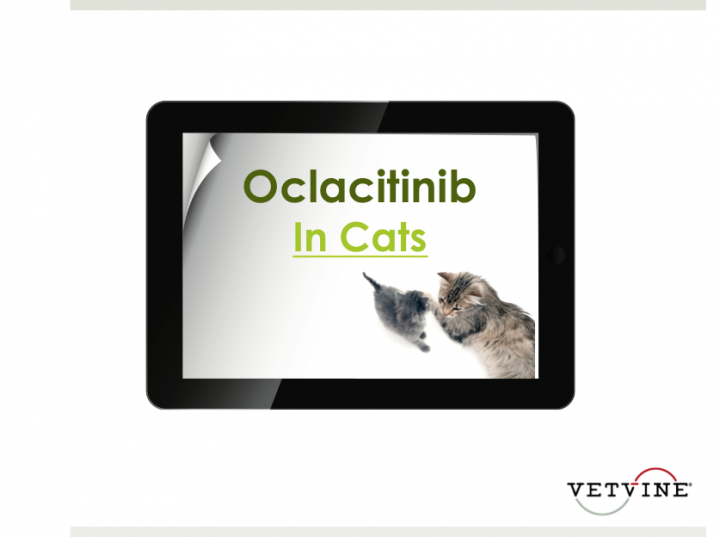This week's Evidence Based Update is a discussion on the use of oclacitinib in cats with allergic dermatitis, including data from a recently published pilot study on the efficacy and tolerability of oclacitinib in cats.
The etiology and pathogenesis of atopic dermatitis (AD) is complex and involves a genetic predisposition and immunologic abnormalities along with an impairment of normal skin-barrier function caused by microorganisms, pollen, and abnormal lipid lamellar formation. This pruritic, inflammatory skin condition is associated with the development of IgE antibodies to environmental allergens.
Pruritic allergic skin disease is common in both canine and feline populations, and its presentation is similar in both.
Although studies in cats are few compared with those in dogs, there is debate as to whether "feline atopic dermatitis" is an accurate term because of some distinctly different clinical presentation and histologic features in cats. The terms nonflea-, nonfood-hypersensitivity dermatitis and feline cutaneous allergies are often used to describe AD in cats. Recently, the International Committee on Allergic Diseases of Animals (ICADA) adopted the term "Feline atopic syndrome (FAS)" to describe allergic skin diseases that exclude parasitic causes but include environmental allergens, and some manifestations of asthma and food reactions.
Read more about Atopic Dermatitis in Dogs
Cats may manifest nonflea-induced hypersensitivity dermatitis (NFHD) or FAS through different reaction patterns including head and neck pruritis and ulcerations, miliary dermatitis, eosinophilic granuloma complex and symmetrical alopecia.
Newer criteria scales developed by Favrot and colleagues are useful tools for diagnosing NFHD / FAS in cats.
Favrot's NFHD / FAS Features in Cats
Treating Allergic Dermatitis
Regardless of the evolving terminology, the practices of managing pruritic skin disease in cats and dogs are similar; the primary goal is to minimize the presence of pruritus and resolve associated skin lesions. Broadly, diagnosis relies on the combination of 3 approaches: (1) ruling out other skin conditions whose signs over lap with AD and FAS; (2) thorough review and interpretation of histologic and clinical features; and (3) allergy testing for detection of IgE.
There is no cure for AD or ALD and management depends on severity and whether pruritis is present seasonally or year round. Most of the data on disease management is in dogs with considerably less in cats, thus more trials are needed in the feline population. Treatment of signs includes the use of antipruritic drugs and control of secondary infections through:
A newer approved drug for canine pruritis, the Janus kinase inhibitor oclacitinib, has been shown to be a rapid, effective and safe option. It specifically inhibits the expression of IL-31. Oclacitinib (commercially available as Apoquel) is approved for use in dogs to treat pruritus and inflammation associated with allergic dermatitis. A recent Evidence Based Update reported on the long-term use of oclacitinib in dogs.
Until recently, studies on the use and effectiveness of oclacitinib in cats were lacking. This week's Evidence Based Update presents data from a recently published study of the use of oclacitinib in cats - specifically, a prospective pilot study on the effectiveness and tolerability of oclacitnib for treating feline nonflea-, nonfood-induced hypersensitivity dermatitis including:
View this Evidence Based Update - Complimentary registration is sponsored by Zoetis. (Running time 10 mins)
Login to earn CE credit (approved in New York and by the NJVMA, pending approval for CE credit by AAVSB RACE).
NON-MEMBERS can click here to view the video
